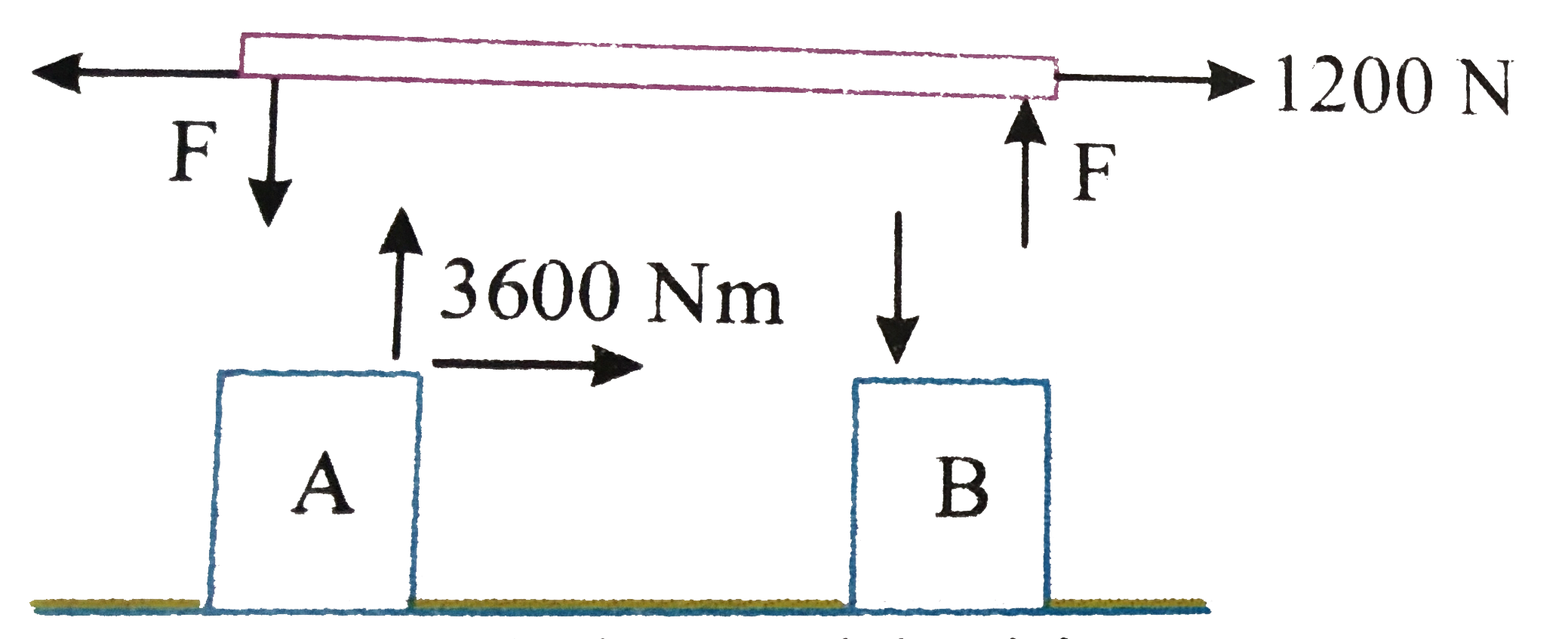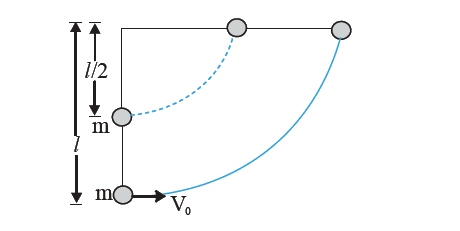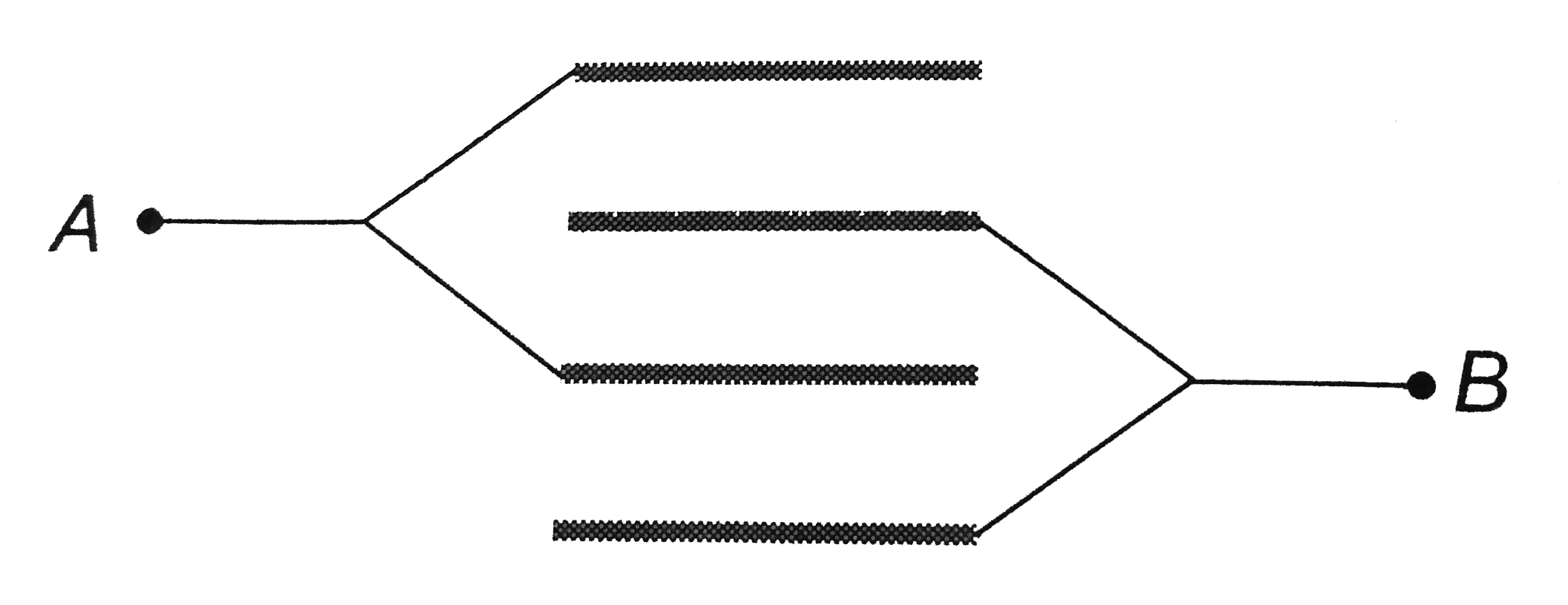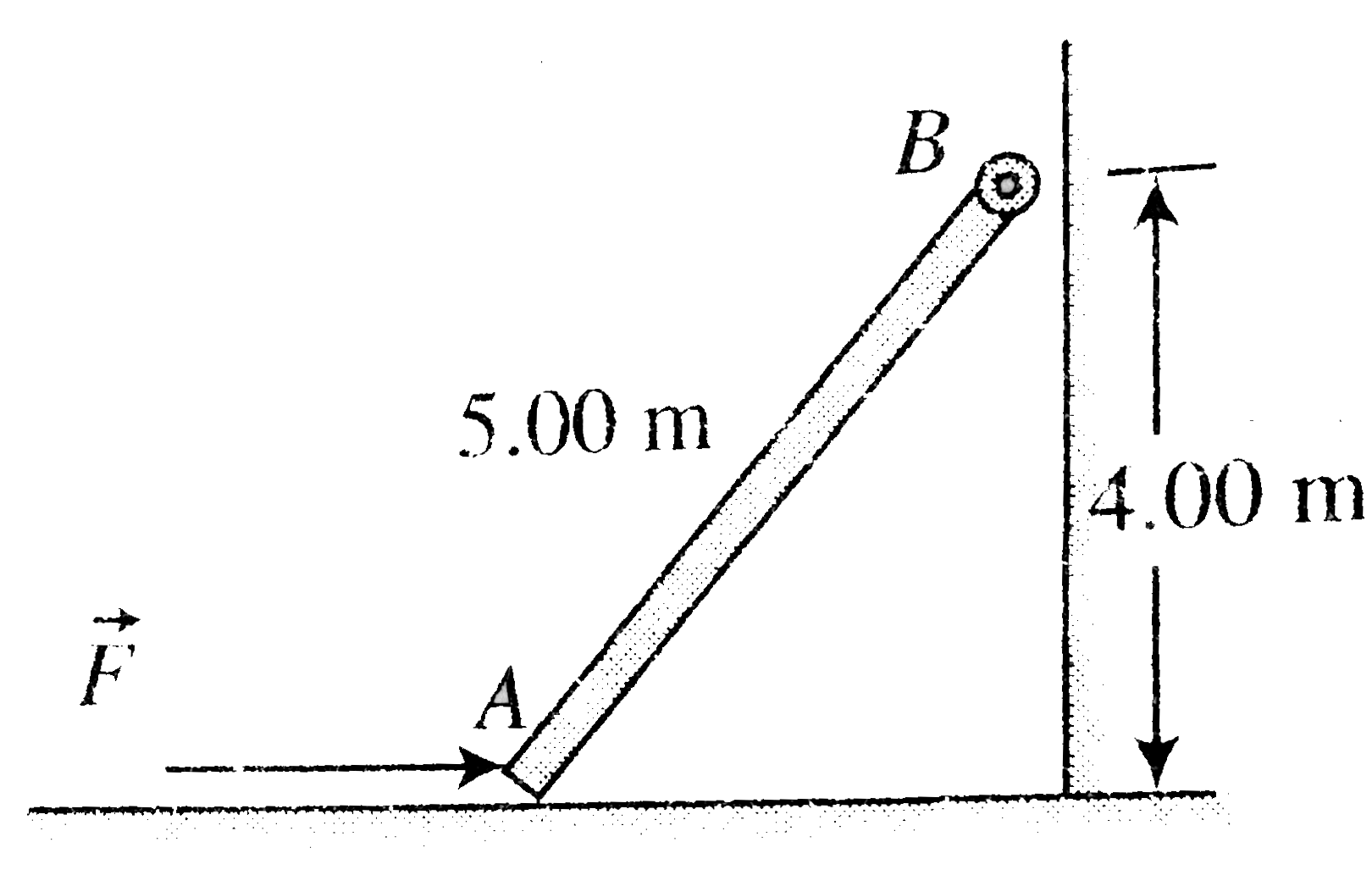In the figure shown, A and B are two short steel rods each of cross-sectional area 5cm2. The lower ends of A and B are welded to a fixed plate CD. The upper end of A is welded to the L-shaped piece EFG, which can slide without friction on upper end of B. A horizontal pull of 1200N is exerted at G as shown. Neglect the weight of EFG.

Longitudinal stress in B is
Tensile in nature and having magntitude 180N/cm2
Tensile in nature and having magnitude 240N/cm2
Compressive in nature and having magnitude 180N/cm2
Compressive in nature and having magnitude 240N/cm2
The correct Answer is:C

since at A it is welded it can take longitudinal and shear forces. A and B there is not friction, So it can take only normal force but not tangential shear force
F×4=1200×3,f=900
Stress =Z=9005=180
Stress in A is tensile and stress in B compressive.
Topper's Solved these Questions
- MECHANICAL PROPERTIES OF SOLIDSBOOK - NARAYNACHAPTER - MECHANICAL PROPERTIES OF SOLIDSEXERCISE - INTERGET TYPE QUESTIONS
3 Videos
- MECHANICAL PROPERTIES OF SOLIDSBOOK - NARAYNACHAPTER - MECHANICAL PROPERTIES OF SOLIDSEXERCISE - MUTI CORRECT ANSWER TYPE
4 Videos
- MECHANICAL PROPERTIES OF SOLIDSBOOK - NARAYNACHAPTER - MECHANICAL PROPERTIES OF SOLIDSEXERCISE - Comprehension-3:
2 Videos
- MECHANICAL PROPERTIES OF FLUIDSBOOK - NARAYNACHAPTER - MECHANICAL PROPERTIES OF FLUIDSEXERCISE - EXERCISE - III
30 Videos
- MOTION IN A PLANEBOOK - NARAYNACHAPTER - MOTION IN A PLANEEXERCISE - Level-II(H.W)
31 Videos
Similar Questions
In the figure shown density of lower liquid is three times of density of upper liquid. The cross- sectional areas of openings shown are same. The ratio of mass flow rate from upper opening to lower opening at initial moment is:
View SolutionA light rod of length l is pivoted at the upper end. Two masses (each m), are attached to the rod, one at the middle and the other at the free end. What horizontal velocity must be imparted to the lower end mass, so that the rod may just take up the horizontal position ?

View Solution
Knowledge Check
In the figure shown, A and B are two short steel rods each of cross-sectional area 5cm2. The lower ends of A and B are welded to a fixed plate CD. The upper end of A is welded to the L-shaped piece EFG, which can slide without friction on upper end of B. A horizontal pull of 1200N is exerted at G as shown. Neglect the weight of EFG.

Mark out the correct statement(s).AShearing stress in A is zero.BShearing stress in B is zeroCShearing stress in both A and B is zeroDShearing stress in both A and B is non-zeroFour plates of the same area of cross-section are joined as shown in the figure. The distance each plate is d. The equivalent capacity across A and B will be
 A2ε0AdB3ε0AdC3ε0A2dDε0Ad
A2ε0AdB3ε0AdC3ε0A2dDε0AdA body of mass M is attached to the lower end of a metal wire, whose upper end is fixed . The elongation of the wire is l.
ALoss in gravitational potential energy ofM is MglBThe elastic potential energy stored in the wire is MglCThe elastic potential energy stored in the wire is 12MglDHeat produced is 12Mgl
For the arrangement shown in the figure,blocks A and B are placed on the smooth horizontal surface.The free end P of the thread is being pulled by a constant force "F=1N" .Find the acceleration of free end P.
View SolutionIn the figure shown, forces of equal magnitude are applied to the two ends of a uniform rod. Consider A as the cross-sectional area of the rod. For this situation, mark out the incorrect statements.

View SolutionA light rod of length l is pivoted at the upper end. Two masses (each m), are attached to the rod, one at the middle and the other at the free end. What horizontal velocity must be imparted to the lower end mass, so that the rod may just take up the horizontal position?

View SolutionEnd A of the bar AB in figure rests on a frictionless horizontal surface and end B is hinged. A horizontal force →F of magnitude 120N is exerted on end A. You can ignore the weight of the bar. What is the net force exerted by the bar on the hinge at B?

View SolutionA thin rod of mass m and length l is hinged at the lower end to a level floor and stands vertically. Then its upper end will strike the floor with a velocity given by:
View Solution
